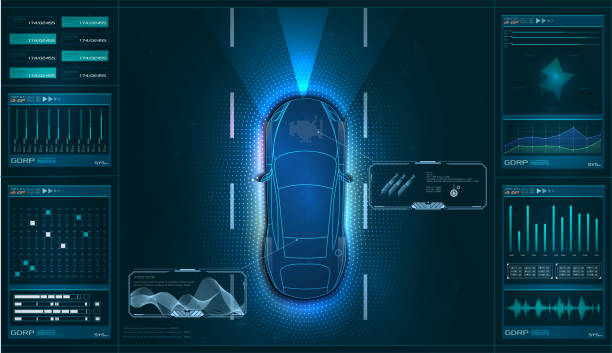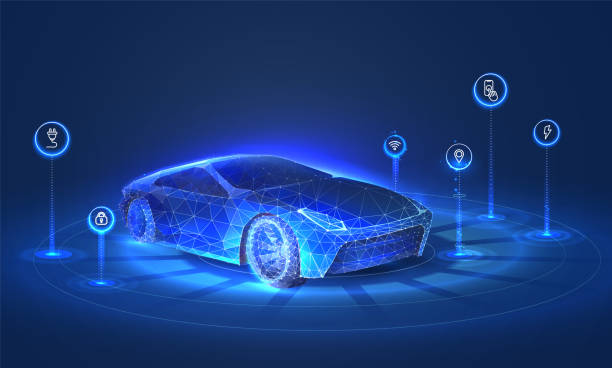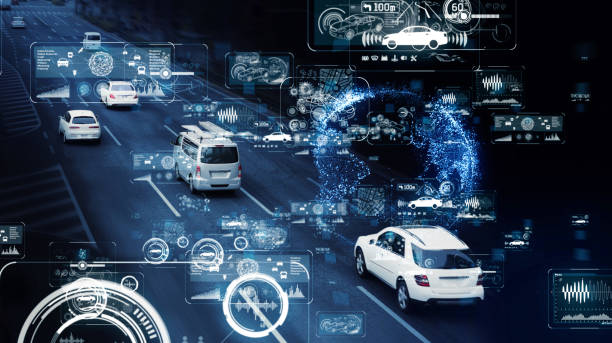Introduction
The rapid evolution of autonomous vehicles (AVs) has revolutionized the automotive industry, ushering in a new era of advanced technologies and sophisticated systems aimed at enhancing vehicle performance, safety, and efficiency. With the integration of cutting-edge remote diagnostic technologies, AV manufacturers and technology companies are redefining the landscape of vehicle maintenance and troubleshooting, enabling real-time monitoring, analysis, and resolution of potential issues, all without the need for physical intervention. As the demand for seamless and efficient remote diagnostics in autonomous vehicles continues to grow, the importance of securing intellectual property rights through comprehensive patenting strategies becomes paramount. This article delves into the intricacies of patenting innovations in autonomous vehicle remote diagnostics, exploring the challenges, opportunities, and best practices for companies seeking to protect their advancements and establish a competitive edge in this transformative and dynamic sector.

Evolution of Remote Diagnostics in Autonomous Vehicles
Emergence of Advanced Sensor Technologies
The evolution of remote diagnostics in autonomous vehicles is intrinsically linked to the advancement of sensor technologies that enable comprehensive data collection and analysis. Innovations in sensor technologies, including LiDAR, radar systems, and advanced camera systems, facilitate the real-time monitoring of vehicle performance, system functionality, and environmental conditions, laying the foundation for proactive diagnostic capabilities. The integration of these advanced sensors with autonomous vehicle systems enables the seamless transmission of critical data, empowering remote diagnostic platforms to accurately identify, assess, and address potential issues before they escalate into significant operational challenges.
Integration of Telematics and Connectivity Solutions
The integration of telematics and connectivity solutions further amplifies the capabilities of remote diagnostics in autonomous vehicles. Advanced telematics systems enable the continuous transmission of vehicle performance data, diagnostic reports, and maintenance alerts to centralized monitoring platforms, facilitating real-time analysis and remote troubleshooting. The seamless connectivity between autonomous vehicles and remote diagnostic centers fosters proactive maintenance strategies, predictive analytics, and efficient resolution of potential technical issues, thereby minimizing downtime, optimizing vehicle performance, and enhancing the overall reliability of autonomous vehicle operations.
Key Components of Patentable Innovations in Remote Diagnostics
Patentable innovations in remote diagnostics, especially in the context of autonomous vehicles, can involve various components that contribute to the unique and novel nature of the invention. While the specific components may vary depending on the particular innovation, some key elements often found in patentable remote diagnostics technologies include:
1. Novelty and inventiveness
The innovation should demonstrate a new and non-obvious way of conducting remote diagnostics. This could involve novel methods for collecting, analyzing, and interpreting diagnostic data, or unique techniques for remotely accessing and assessing vehicle systems.
2. Technological advancements
Patentable remote diagnostics often incorporate advanced technologies such as artificial intelligence, machine learning, data analytics, and predictive modeling to enable efficient and accurate diagnostic capabilities. Clearly defining the technological advancements and their applications in the patent application can strengthen its patentability.
3. Data acquisition and analysis
Innovations in remote diagnostics often involve novel ways of acquiring and analyzing data from various vehicle components and systems. This can include inventive sensors, communication protocols, data processing algorithms, and diagnostic software that enable comprehensive and real-time analysis of vehicle performance and health.
4. Connectivity and communication protocols
Patented remote diagnostics solutions may involve unique communication protocols and connectivity technologies that enable seamless and secure data transmission between the vehicle and remote diagnostic systems. These may include proprietary communication algorithms, secure data transfer methods, and robust networking solutions that ensure efficient and reliable data exchange.
5. User interface and data visualization
Patentable remote diagnostics often include innovative user interfaces and data visualization techniques that enable users to easily interpret complex diagnostic information. This can involve intuitive dashboards, interactive visualizations, and user-friendly applications that provide actionable insights and facilitate informed decision-making.
6. Predictive maintenance and analytics
Innovations in remote diagnostics often focus on predictive maintenance capabilities, leveraging advanced analytics to forecast potential issues and recommend proactive measures to avoid critical failures. Patentable solutions may involve unique predictive modeling algorithms, maintenance scheduling techniques, and prognostic tools that optimize vehicle performance and enhance overall safety and reliability.
7. Compliance and security features
Remote diagnostic systems may incorporate patented features that ensure compliance with regulatory standards and protocols, as well as robust security measures to safeguard sensitive data from unauthorized access and cyber threats. These features can include encrypted communication channels, compliance monitoring algorithms, and data protection mechanisms that meet industry-specific regulations and requirements.
When seeking to patent innovations in remote diagnostics, it is crucial to highlight the unique features and functionalities that distinguish the invention from existing technologies. Conducting a thorough prior art search and collaborating with patent attorneys experienced in the relevant field can significantly strengthen the patent application and increase the likelihood of obtaining robust patent protection for the innovative remote diagnostics solution.

Challenges in Patenting Innovations in Autonomous Vehicle Remote Diagnostics
Patenting innovations in the field of autonomous vehicle remote diagnostics can be a complex process, considering the technological advancements and the interplay of various disciplines. Some of the key challenges that innovators may face when attempting to patent such innovations include:
1. Complexities of Software Patenting
Patenting innovations in autonomous vehicle remote diagnostics involves addressing the complexities associated with software patenting. The dynamic nature of software-based solutions, including diagnostic algorithms, data analysis platforms, and predictive maintenance systems, presents challenges related to demonstrating the patent eligibility of software-related inventions. Companies must navigate the evolving legal landscape, satisfy the stringent patentability criteria for software innovations, and clearly articulate the technical advancements and practical applications of their remote diagnostic solutions to ensure the successful patenting of their intellectual property.
2. Navigating Regulatory and Compliance Requirements
The integration of remote diagnostics in autonomous vehicles requires companies to navigate a complex regulatory landscape encompassing data privacy regulations, cybersecurity standards, and industry-specific compliance requirements. Ensuring compliance with these regulations is essential for safeguarding sensitive vehicle data, maintaining consumer trust, and mitigating potential legal and ethical risks associated with the remote monitoring and analysis of autonomous vehicle systems. Companies must develop comprehensive strategies to address the regulatory challenges, implement robust data security measures, and adhere to industry best practices to protect the confidentiality and integrity of diagnostic data while complying with the relevant legal and regulatory frameworks.
3. Patent eligibility
Ensuring that the invention meets the criteria for patentability as set by the respective patent office can be challenging. Some jurisdictions have strict guidelines for what can be patented, particularly in software-related inventions and business methods.
4. Rapid technological advancements
Given the rapid pace of technological advancements in the autonomous vehicle industry, the patent application must be future-proofed to the extent possible. This involves predicting potential future developments and ensuring that the patent application can accommodate such changes without losing its relevance.
5. Patent disputes and litigation
With the growing competition in the autonomous vehicle industry, patent disputes and litigation are becoming more common. It is essential to conduct a thorough prior art search and analysis to anticipate potential challenges to the patent’s validity and enforceability.
Given these challenges, it is advisable for innovators to work closely with experienced patent attorneys who specialize in the field of autonomous vehicles and have a strong understanding of the technological and legal landscape. Conducting a comprehensive prior art search, drafting a well-defined patent application, and anticipating potential challenges can significantly increase the chances of successfully patenting innovations in autonomous vehicle remote diagnostics.
Strategies for Effective Patenting of Remote Diagnostics Innovations
A. Proactive Intellectual Property Portfolio Management
Implementing proactive intellectual property portfolio management practices is essential for effectively patenting innovations in autonomous vehicle remote diagnostics. Companies should conduct comprehensive prior art searches, monitor technological developments, and file patent applications to secure priority dates for their remote diagnostic solutions. Strategic portfolio management enables companies to establish a strong intellectual property portfolio, protect their innovative technologies, and position themselves as key innovators in the autonomous vehicle industry.
B. Collaboration with Legal Experts and Industry Specialists
Collaborating with experienced patent attorneys, intellectual property experts, and industry specialists is instrumental in overcoming the challenges associated with patenting innovations in autonomous vehicle remote diagnostics. Legal experts can provide valuable insights into the evolving regulatory landscape, offer guidance on software patenting strategies, and assist in developing comprehensive patenting strategies tailored to the unique requirements of remote diagnostic technologies. Their expertise can help companies navigate the intricacies of the patenting process, from initial patent searches to the drafting and filing of patent applications, ensuring the effective protection of intellectual property rights.
C. Investment in Research and Development Initiatives
Emphasizing investment in research and development initiatives is critical for driving the continuous innovation of remote diagnostic technologies in autonomous vehicles. Companies should prioritize R&D efforts aimed at developing cutting-edge diagnostic algorithms, data analysis platforms, and predictive maintenance models that enhance the efficiency, reliability, and safety of autonomous vehicle operations. Demonstrating a strong commitment to innovation and technological advancement not only strengthens the credibility of patent applications but also positions companies at the forefront of remote diagnostic innovations in the automotive industry.
D. Adherence to Industry Standards and Best Practices
Adhering to industry standards and best practices is essential for ensuring the effective and responsible deployment of remote diagnostic technologies in autonomous vehicles. Companies should actively engage with industry consortia, participate in standardization initiatives, and contribute to the development of standardized protocols and guidelines that govern the use of remote diagnostic solutions in autonomous vehicle systems. By aligning their patenting strategies with industry standards and best practices, companies can demonstrate their commitment to responsible and ethical innovation while fostering collaboration and interoperability within the automotive ecosystem.
Case Studies: Successful Patent Strategies in Autonomous Vehicle Remote Diagnostics
A. Analysis of Notable Patents and Intellectual Property Portfolios
An analysis of successful patent strategies in autonomous vehicle remote diagnostics reveals notable patents and intellectual property portfolios that have significantly influenced the development and deployment of remote diagnostic technologies. Case studies highlighting the approaches and best practices employed by industry leaders offer valuable insights into the strategies for effectively protecting intellectual property rights and driving the innovation of remote diagnostic solutions in the automotive industry. These case studies underscore the importance of proactive portfolio management, collaborative patenting strategies, and continuous investment in research and development initiatives for establishing a strong foothold in the autonomous vehicle remote diagnostics landscape.
Impact of Patents on Technological Advancements and Market Competitiveness
Examining the impact of patents on technological advancements and market competitiveness in the field of autonomous vehicle remote diagnostics underscores the critical role of intellectual property protection in shaping the competitive dynamics of the automotive industry. Companies that have successfully leveraged their patent portfolios to safeguard innovative remote diagnostic technologies have established a significant competitive advantage, solidifying their market positions and fostering technological advancements. The analysis of the correlation between successful patent strategies and market competitiveness provides valuable insights into the effective utilization of intellectual property as a strategic asset in the automotive industry.

Future Outlook and Emerging Trends in Autonomous Vehicle Remote Diagnostics Patents
Predictions for Technological Advancements and Industry Disruption
The future of autonomous vehicle remote diagnostics is poised for significant technological advancements and industry disruption, driven by ongoing research and development efforts focused on enhancing the capabilities of remote diagnostic solutions, optimizing predictive maintenance strategies, and enabling real-time data analysis for proactive troubleshooting and resolution. Predictions suggest the integration of advanced artificial intelligence (AI) technologies, blockchain-based data security solutions, and decentralized diagnostic platforms that redefine the capabilities of remote diagnostics in autonomous vehicles, fostering a future of enhanced vehicle performance, reliability, and operational efficiency.
Anticipated Changes in Patenting Strategies and Regulatory Compliance
The anticipated evolution of autonomous vehicle remote diagnostics demands a proactive approach to patenting strategies and regulatory compliance, emphasizing the importance of anticipating and adapting to emerging technological trends and regulatory frameworks. Companies must remain agile and responsive to changes in intellectual property laws, industry standards, and market dynamics, ensuring that their patenting strategies align with the evolving landscape of remote diagnostic innovations in the automotive industry. Emphasizing the integration of AI-driven diagnostic algorithms, blockchain-based data security protocols, and decentralized diagnostic platforms into patenting strategies will be instrumental in securing a competitive edge and driving the future advancements of autonomous vehicle remote diagnostics technologies.
Conclusion
In conclusion, patenting innovations in autonomous vehicle remote diagnostics requires a proactive and comprehensive approach that addresses the complexities of software patenting, regulatory compliance, and technological advancements. By emphasizing strategic portfolio management, collaboration with legal experts, investment in research and development initiatives, and adherence to industry standards and best practices, companies can effectively navigate the challenges associated with patenting remote diagnostic technologies and position themselves as key innovators in the automotive industry. Looking ahead, the integration of advanced AI technologies, blockchain-based data security solutions, and decentralized diagnostic platforms will shape the future of autonomous vehicle remote diagnostics, fostering a transformative and technologically advanced automotive ecosystem.

